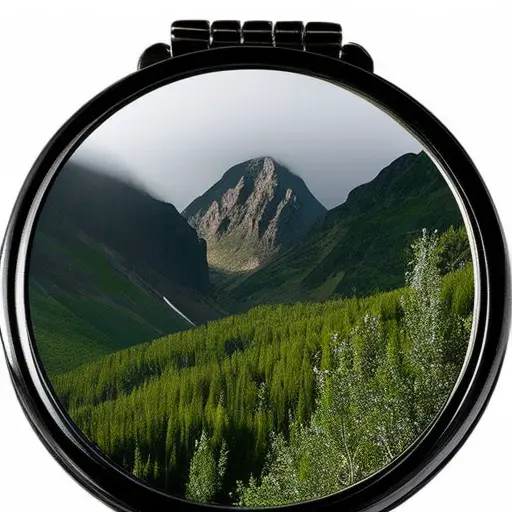The Science Behind Water Filtration in the Wilderness

In the vast wilderness, where the untamed forces of nature reign supreme, water becomes both a lifeline and a potential threat. As explorers and adventurers venture into the unknown, the intricate science behind water filtration emerges as a beacon of hope.
This article delves into the depths of this scientific marvel, unraveling the mechanisms and chemical processes that drive the effectiveness of water filtration in the wild. Prepare to embark on a journey of technical analysis and informative discovery, as we uncover the secrets of purifying water in the wilderness.
Importance of Water Filtration
The importance of water filtration cannot be understated in wilderness environments. Clean water is essential for human survival, and without access to it, individuals can suffer from a range of health issues. Water filtration plays a crucial role in ensuring that the water consumed in the wilderness is safe and free from harmful contaminants.
One of the primary reasons for the importance of clean water is its direct impact on human health. Drinking contaminated water can lead to various waterborne diseases, such as diarrhea, cholera, and dysentery. These illnesses can cause severe dehydration, electrolyte imbalances, and even death, especially in vulnerable populations such as children, the elderly, and individuals with weakened immune systems. By implementing water filtration systems in the wilderness, the risk of contracting these diseases is significantly reduced, safeguarding the health and well-being of those relying on these water sources.
Furthermore, water filtration provides numerous health benefits beyond preventing immediate illness. It removes impurities and harmful substances, such as bacteria, viruses, protozoa, heavy metals, and chemicals, improving the overall quality of the water. Clean water promotes healthy digestion, boosts the immune system, and helps maintain proper hydration levels. Additionally, it reduces the burden on the body’s detoxification organs, such as the liver and kidneys, allowing them to function optimally.
Contaminants in Wilderness Water Sources
Numerous contaminants can be found in wilderness water sources, posing a threat to human health. When exploring the wilderness, it is crucial to be aware of the potential presence of harmful substances in natural water sources. Some of the common contaminants that can be found include:
-
Bacteria: Harmful strains of bacteria such as E. coli and Salmonella can cause waterborne diseases like diarrhea, vomiting, and abdominal pain.
-
Parasites: Protozoa like Giardia and Cryptosporidium are common in wilderness water sources and can lead to gastrointestinal illnesses.
-
Viruses: Water can be contaminated with viruses such as norovirus and hepatitis A, which can cause severe illness and even death.
-
Chemical pollutants: Pesticides, heavy metals, and industrial pollutants can find their way into wilderness water sources, posing long-term health risks.
To ensure safe consumption, it is essential to employ effective water treatment methods. Filtration systems with a pore size of less than 1 micron can effectively remove bacteria, parasites, and some viruses. Chemical disinfection methods like using chlorine or iodine tablets can provide an additional layer of protection against waterborne pathogens. Boiling water for at least one minute is also an effective method to kill most microorganisms.
Mechanisms of Water Filtration Devices
Water filtration devices in the wilderness employ various mechanisms to remove contaminants from natural water sources. These mechanisms include mechanical filtration techniques and biological filtration processes.
Mechanical filtration techniques involve physically removing impurities from the water. This can be achieved through the use of filters with small pores that trap particles, such as sand, sediment, and debris. These filters can be made from materials like ceramic, carbon, or membrane filters. The size of the filter pores determines the size of particles that can be removed. This method effectively removes larger contaminants from the water, improving its clarity and taste.
In addition to mechanical filtration, biological filtration processes are used to eliminate microorganisms and bacteria from the water. This involves the use of materials that have been treated or coated with substances that have antimicrobial properties, such as silver or iodine. These substances help to kill or inhibit the growth of harmful pathogens in the water. Biological filtration processes are particularly effective in removing bacteria and viruses, ensuring that the water is safe for consumption.
Role of Physical Filtration in Removing Impurities
Physical filtration plays a crucial role in removing impurities from water in the wilderness. Understanding the filtration mechanisms is essential to ensure effective removal of contaminants.
Filtration Mechanisms Explained
The role of physical filtration in removing impurities from water can be better understood through an exploration of its mechanisms.
Physical filtration involves the use of barriers to physically separate impurities from the water. Here are four mechanisms commonly employed in physical filtration:
-
Sedimentation: This mechanism allows heavier particles to settle at the bottom of the filtration medium, while the cleaner water is collected from the top.
-
Straining: In this mechanism, water passes through a filter with tiny pores that trap larger particles, preventing them from entering the purified water.
-
Adsorption: This mechanism utilizes activated carbon or other adsorbent materials to attract and remove impurities by trapping them on their surface.
-
Sieving: Water is passed through a mesh or screen that filters out larger particles, leaving behind cleaner water.
Impurity Removal Efficiency
Through the use of various filtration mechanisms, impurity removal efficiency is achieved in the process of water filtration in the wilderness. In order to ensure the effectiveness of the filtration system, impurity detection methods and regular maintenance are crucial.
Impurity detection methods include visual inspection to identify particles and sediments, as well as chemical tests to detect contaminants such as bacteria, viruses, and heavy metals. Regular maintenance of the filtration system involves cleaning and replacing filter cartridges to prevent clogging and maintain optimal performance. It is also important to periodically check the system for any leaks or damages that may compromise its efficiency.
By implementing these impurity detection methods and practicing proper filtration system maintenance, the removal of impurities can be maximized to provide safe and clean drinking water in the wilderness.
Transition to the subsequent section about ‘practical filtration techniques’:
Now that we have discussed the impurity removal efficiency, let us delve into practical filtration techniques that are commonly employed in the wilderness.
Practical Filtration Techniques
Continuing from the previous subtopic, the role of physical filtration in removing impurities is a key aspect of practical water filtration techniques in the wilderness.
Portable filtration systems that utilize physical barriers are commonly used to remove larger particles and sediment from natural water sources. These systems often employ the following techniques:
-
Straining: Water is passed through a mesh or screen to trap large particles.
-
Sedimentation: Water is allowed to settle, allowing heavier particles to sink to the bottom.
-
Filtration media: Materials such as activated carbon or ceramic filters are used to trap impurities.
-
Membrane filtration: Thin membranes with microscopic pores are used to physically block contaminants.
By employing these physical filtration techniques, portable filtration systems can effectively remove visible impurities from natural water sources, making them safer for consumption.
However, it is important to note that physical filtration alone may not remove all types of contaminants, necessitating the use of chemical processes in water filtration.
Chemical Processes in Water Filtration
Chemical processes play a crucial role in water filtration, particularly in removing impurities that physical filtration alone cannot address. While physical filtration focuses on the size and shape of particles, chemical processes involve the use of substances such as activated carbon to adsorb and remove contaminants.
Activated carbon acts as a powerful adsorbent, attracting and trapping organic compounds, chlorine, and other chemicals, thereby improving the taste, odor, and overall quality of the filtered water.
Filtration Vs. Purification
In water filtration, the distinction between filtration and purification lies in the use of different chemical processes. Filtration methods involve physically removing impurities from water, while purification involves the use of chemicals to kill or neutralize pathogens and other harmful substances. Here are four key points to consider when comparing filtration and purification:
-
Filtration: This process typically involves passing water through a physical filter to remove particles, sediment, and larger impurities.
-
Purification: Chemical processes such as chlorination, ozonation, or ultraviolet (UV) treatment are used to kill or inactivate microorganisms that can cause diseases.
-
Effectiveness: Filtration is effective in removing larger impurities, but it may not eliminate all pathogens. Purification, on the other hand, can effectively kill or neutralize microorganisms.
-
Combined Approach: In many water treatment systems, filtration and purification methods are combined to ensure the removal of both physical impurities and harmful pathogens.
Understanding the distinction between filtration and purification is crucial for selecting the appropriate water treatment method in different situations.
Role of Activated Carbon
Activated carbon plays a crucial role in the chemical processes involved in water filtration. It is a porous material that is highly effective in removing organic contaminants, such as pesticides, solvents, and volatile organic compounds (VOCs), from water.
One of the main benefits of activated carbon is its ability to adsorb a wide range of contaminants, making it an efficient method for water purification. Additionally, activated carbon can improve the taste and odor of water by removing chlorine and other chemicals that affect the sensory properties of drinking water.
However, activated carbon also has limitations. It is less effective in removing inorganic contaminants, such as heavy metals and minerals, which require other filtration methods. Moreover, activated carbon filters have a limited lifespan and need to be replaced regularly to maintain their effectiveness.
Effectiveness of Water Filtration in the Wild
Water filtration in the wild can be highly effective when using proper equipment and techniques. The effectiveness of water filtration can be measured using various methods to ensure the purity and safety of the water. Here are four important factors to consider when evaluating the effectiveness of water filtration:
-
Microbial removal: One of the primary goals of water filtration is to remove harmful microorganisms such as bacteria, viruses, and protozoa. The effectiveness of a filtration system can be measured by analyzing the reduction in microbial content before and after filtration.
-
Particulate removal: Filtration systems also aim to remove suspended particles and sediments from the water. The efficiency of a filtration system can be evaluated by measuring the reduction in turbidity or the amount of particulate matter present in the filtered water.
-
Chemical removal: Some filtration systems incorporate activated carbon or other materials to adsorb and remove chemical contaminants from the water. The effectiveness of these systems can be assessed by measuring the reduction in the concentration of specific chemicals or pollutants.
-
Flow rate and capacity: The effectiveness of water filtration also depends on the flow rate and capacity of the system. A filtration system that can process a larger volume of water in a shorter period is generally considered more effective and practical in the wild.
While water filtration is an effective method for purifying water in the wild, it is important to note that alternative purification methods such as boiling and chemical treatments can also be used in conjunction with filtration to ensure comprehensive water safety.
Frequently Asked Questions
How Does Water Filtration in the Wilderness Differ From Water Filtration at Home?
Water filtration in the wilderness differs from home filtration in terms of available resources, portability, and efficiency. The absence of electricity and plumbing systems necessitates the use of portable filtration methods that prioritize compactness and effectiveness in removing contaminants.
Can Water Filtration Devices Remove All Types of Contaminants Found in Wilderness Water Sources?
Water filtration devices in the wilderness have limitations in removing all contaminants. While they are effective in removing bacteria and protozoa, they may not be able to remove certain chemicals, viruses, or heavy metals.
Are There Any Natural Methods for Water Filtration That Can Be Used in the Wilderness?
Natural alternatives for water filtration in the wilderness are limited, but some methods, such as boiling and using natural materials like sand and charcoal, can be effective to some extent. However, their effectiveness varies depending on the specific contaminants present in the water source.
How Long Can Water Filters Be Used in the Wilderness Before They Need to Be Replaced?
Water filters in the wilderness have a limited lifespan, which varies depending on the filter type, water quality, and frequency of use. Regular maintenance and replacement are necessary to ensure the longevity and effectiveness of water filters.
Is It Necessary to Boil Water in Addition to Using a Water Filtration Device in the Wilderness?
It is not necessary to boil water in addition to using a water filtration device in the wilderness. However, the efficiency comparison between boiling and filtration depends on various factors, including environmental conditions that may impact the effectiveness of filtration devices.
Conclusion
In conclusion, water filtration is of utmost importance in the wilderness due to the presence of various contaminants in natural water sources.
Through the mechanisms of physical filtration and chemical processes, water filtration devices effectively remove impurities, ensuring the safety and quality of drinking water.
The science behind water filtration in the wild is a complex and analytical process, where the use of innovative techniques and technologies plays a crucial role.
As the saying goes, ‘water is life,’ and proper filtration ensures that this life-sustaining resource remains pure and accessible.





